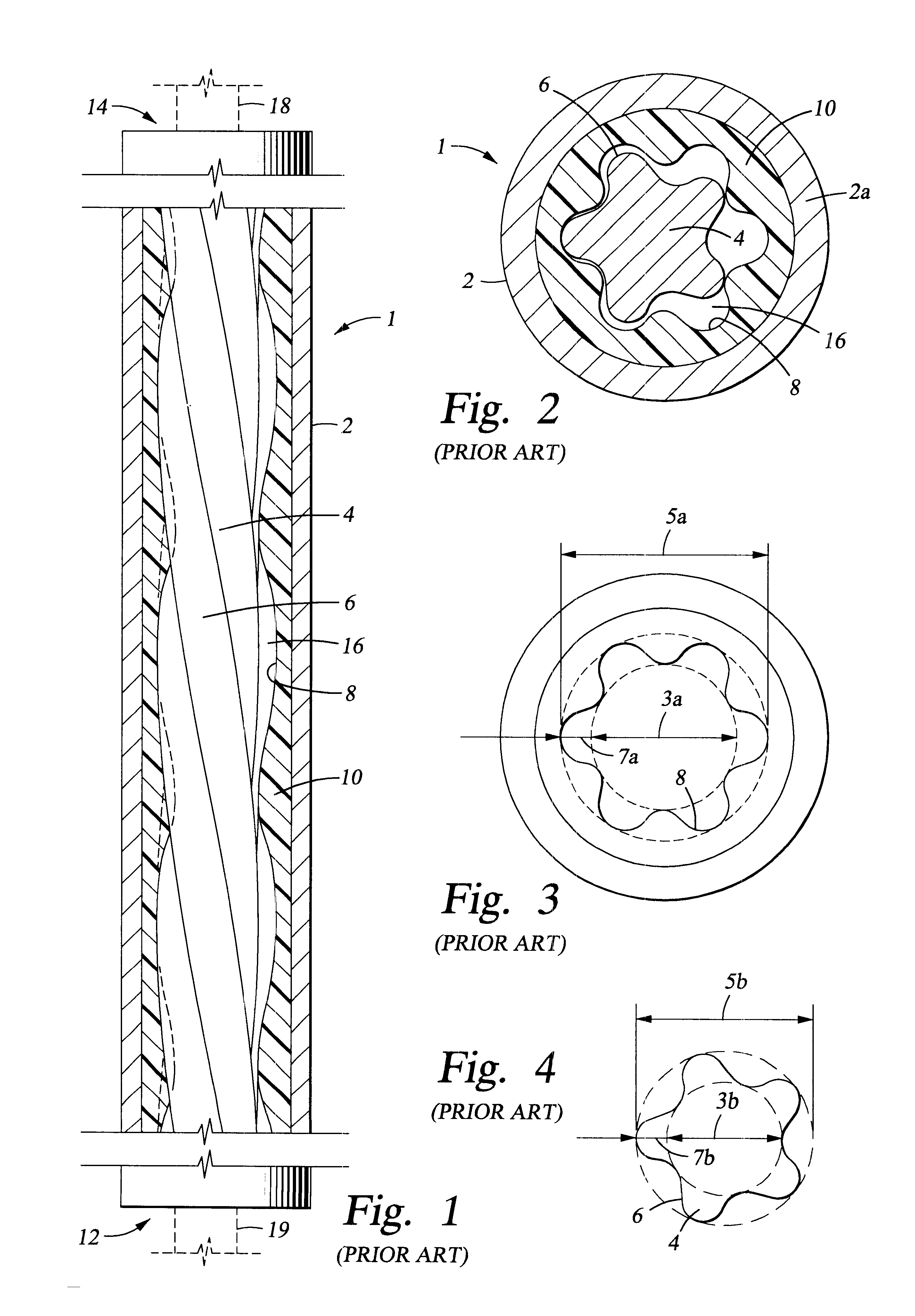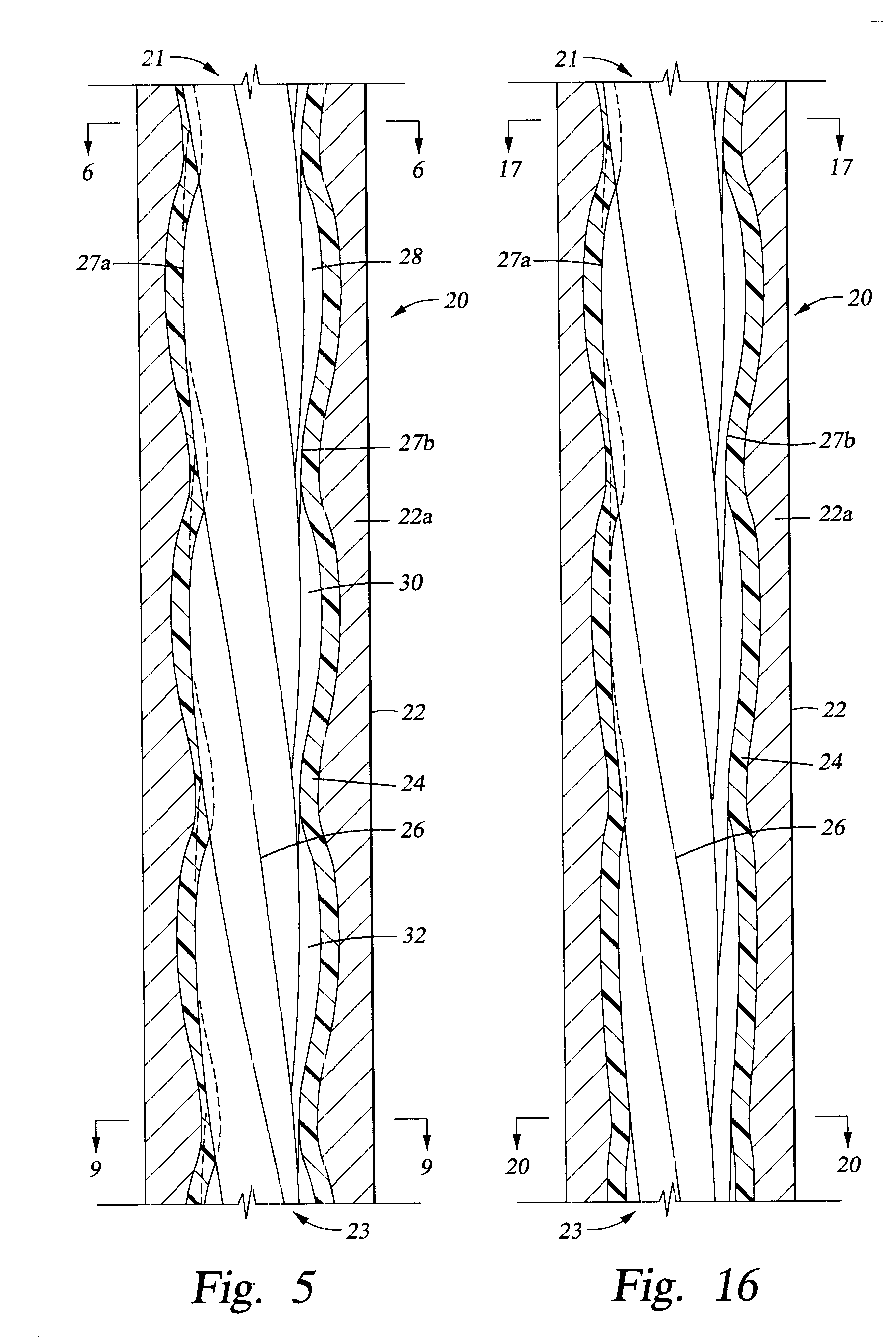Self compensating adjustable fit progressing cavity pump for oil-well applications with varying temperatures
- Summary
- Abstract
- Description
- Claims
- Application Information
AI Technical Summary
Problems solved by technology
Method used
Image
Examples
example
An elastomeric member has an elastomer thickness of about 0.375 inches and an effective expansion coefficient of about 450.times.10.sup.-6 in / (in per .degree.C.). A rod string has a length of 3000 feet (36,000 inches) and an expansion coefficient of about 10.8.times.10.sup.-6 in / (in per .degree.C.). In this case, the taper angle of the rotor is:
.theta.=Tan.sup.-1 [(0.375 / 36,000) (450.times.10.sup.-6 / 10.8.times.10.sup.-6)]=0.248.degree.
Application of the embodiments provided herein allows a pump to maintain a desired interference fit even when the pump is exposed to varying temperature conditions. In one embodiment, the interference fit is between about 0.015 and about 0.075. The dimensions and elastomer characteristics of a particular PCP are provided in Tables I and II below. Table I contains rod string information and Table II contains pump information at the top of the pump when aligned at ambient temperature. In this particular example, ambient temperature is about 25.degree. C...
PUM
 Login to View More
Login to View More Abstract
Description
Claims
Application Information
 Login to View More
Login to View More - R&D
- Intellectual Property
- Life Sciences
- Materials
- Tech Scout
- Unparalleled Data Quality
- Higher Quality Content
- 60% Fewer Hallucinations
Browse by: Latest US Patents, China's latest patents, Technical Efficacy Thesaurus, Application Domain, Technology Topic, Popular Technical Reports.
© 2025 PatSnap. All rights reserved.Legal|Privacy policy|Modern Slavery Act Transparency Statement|Sitemap|About US| Contact US: help@patsnap.com



